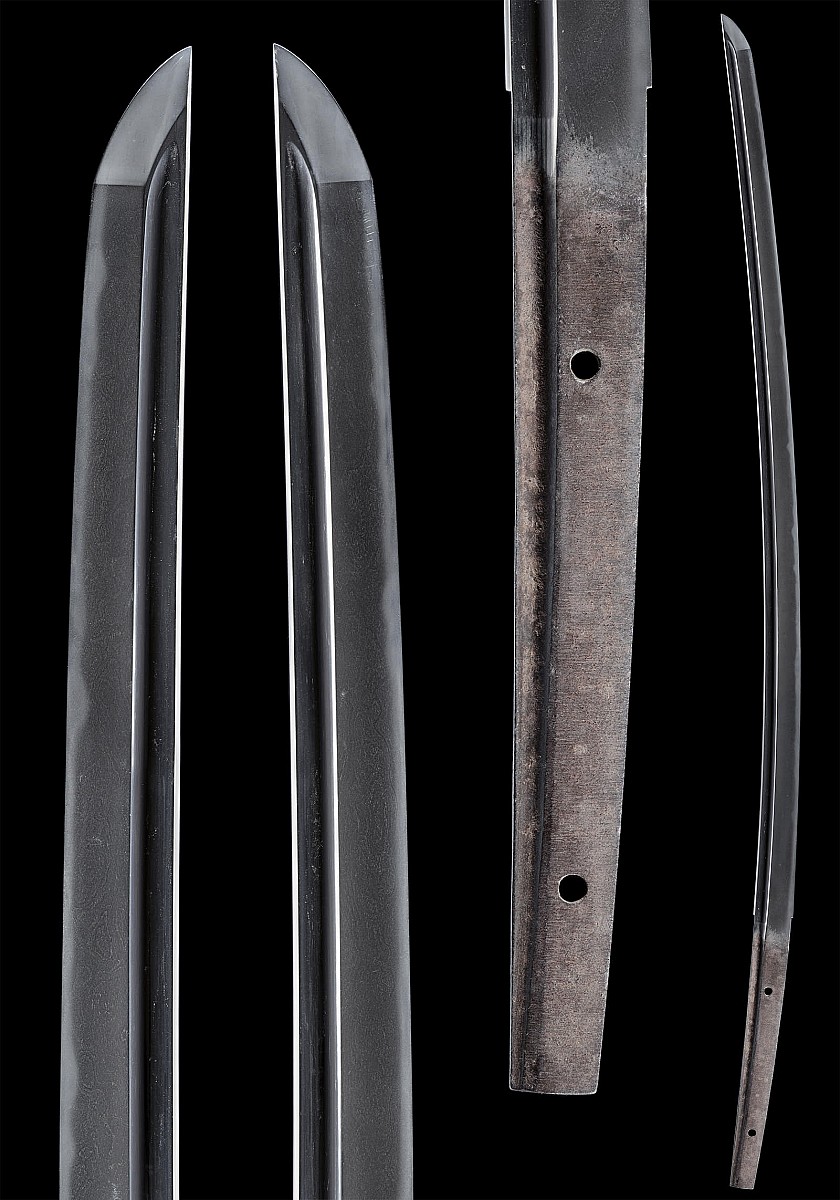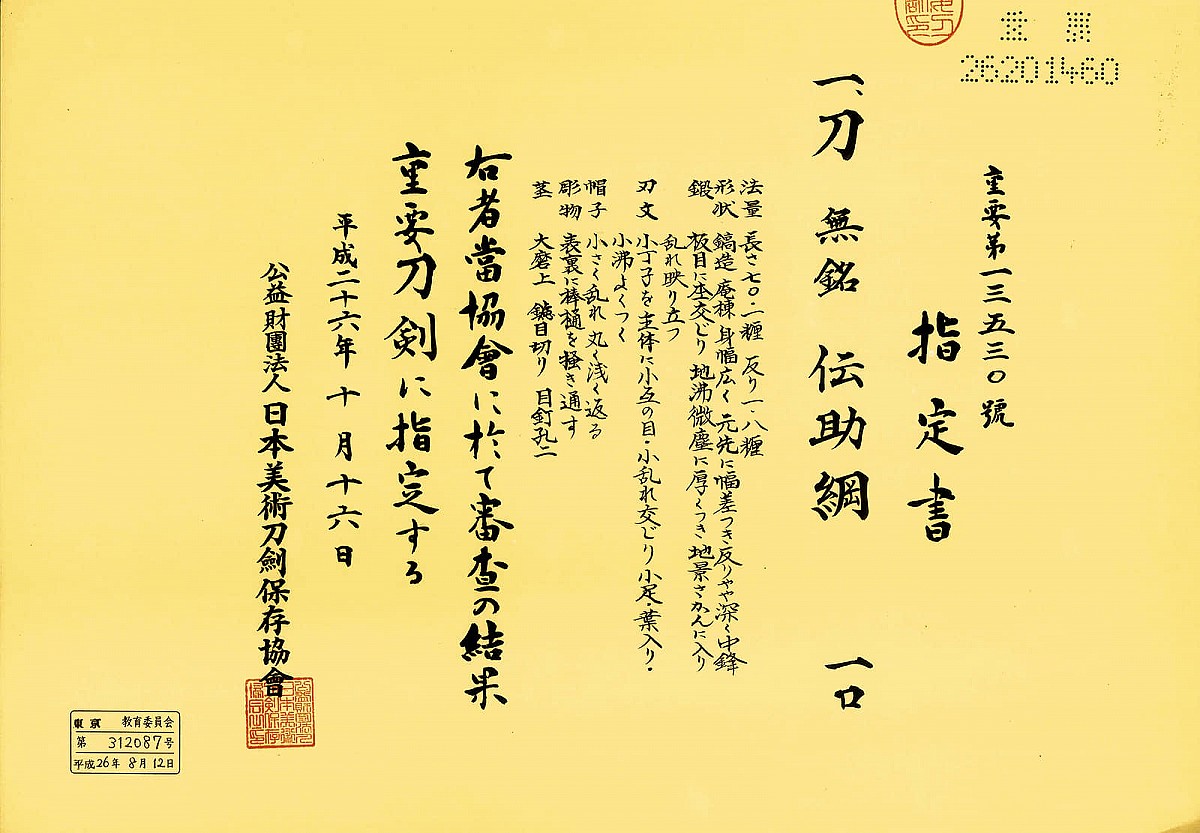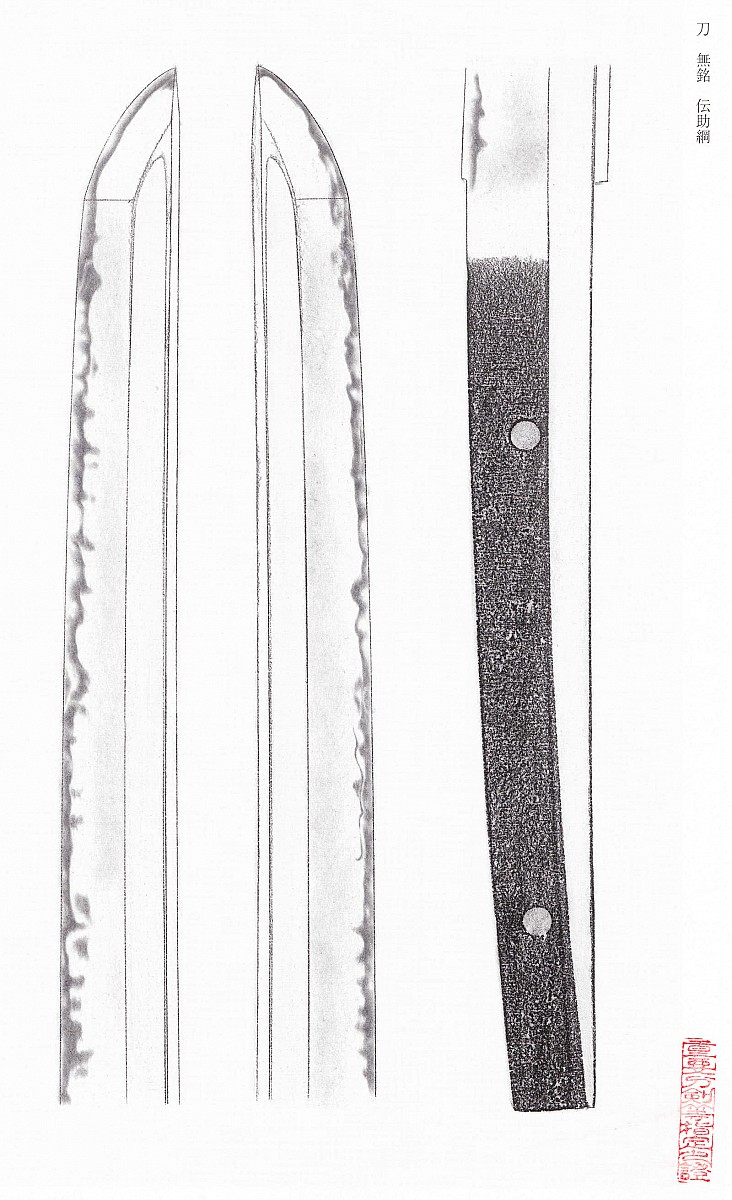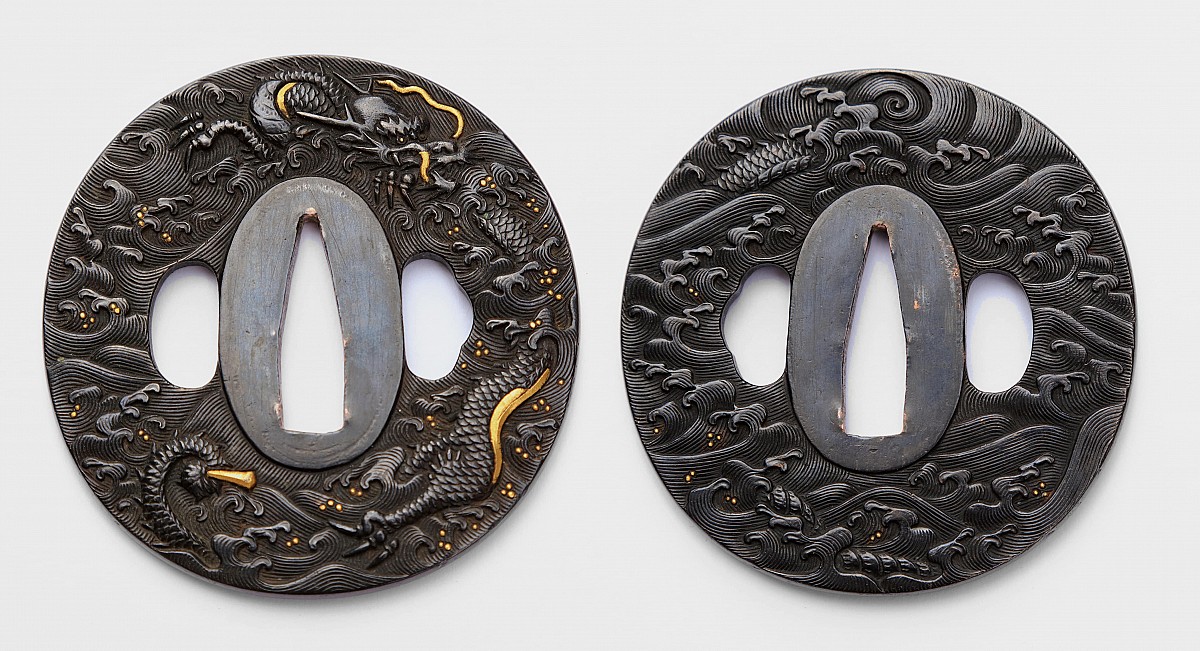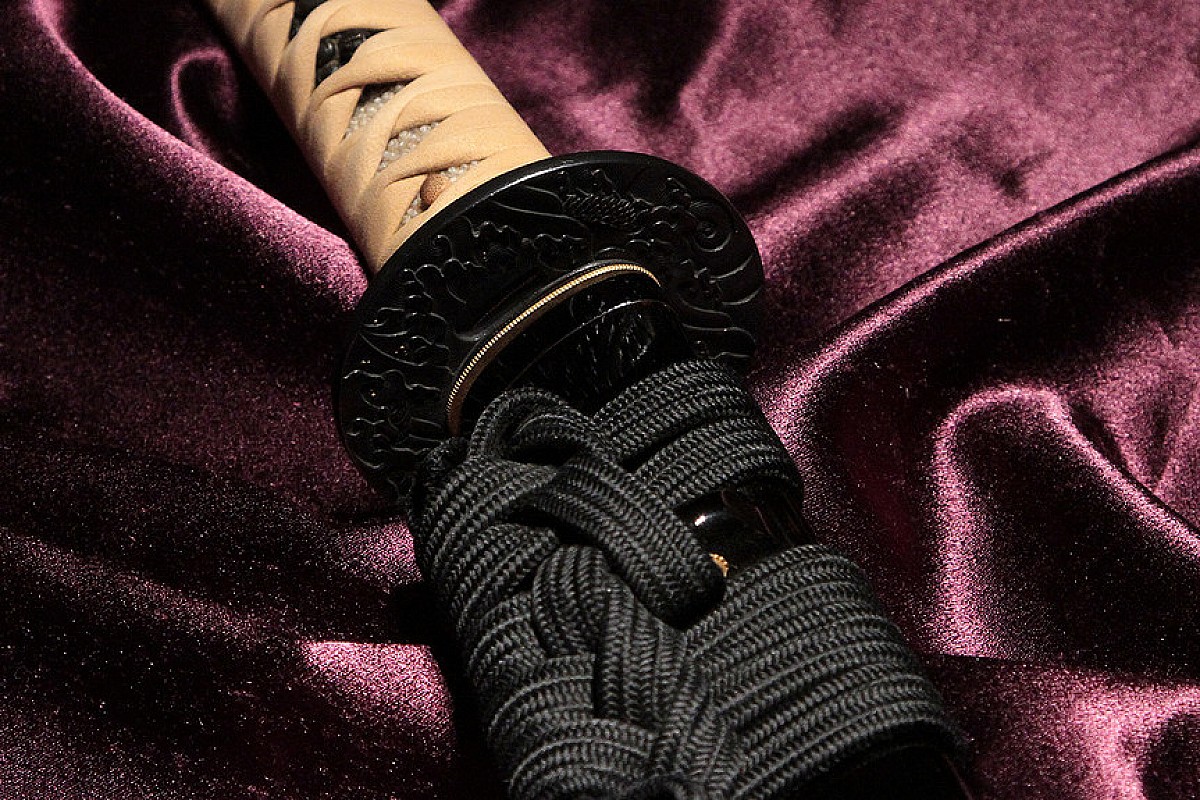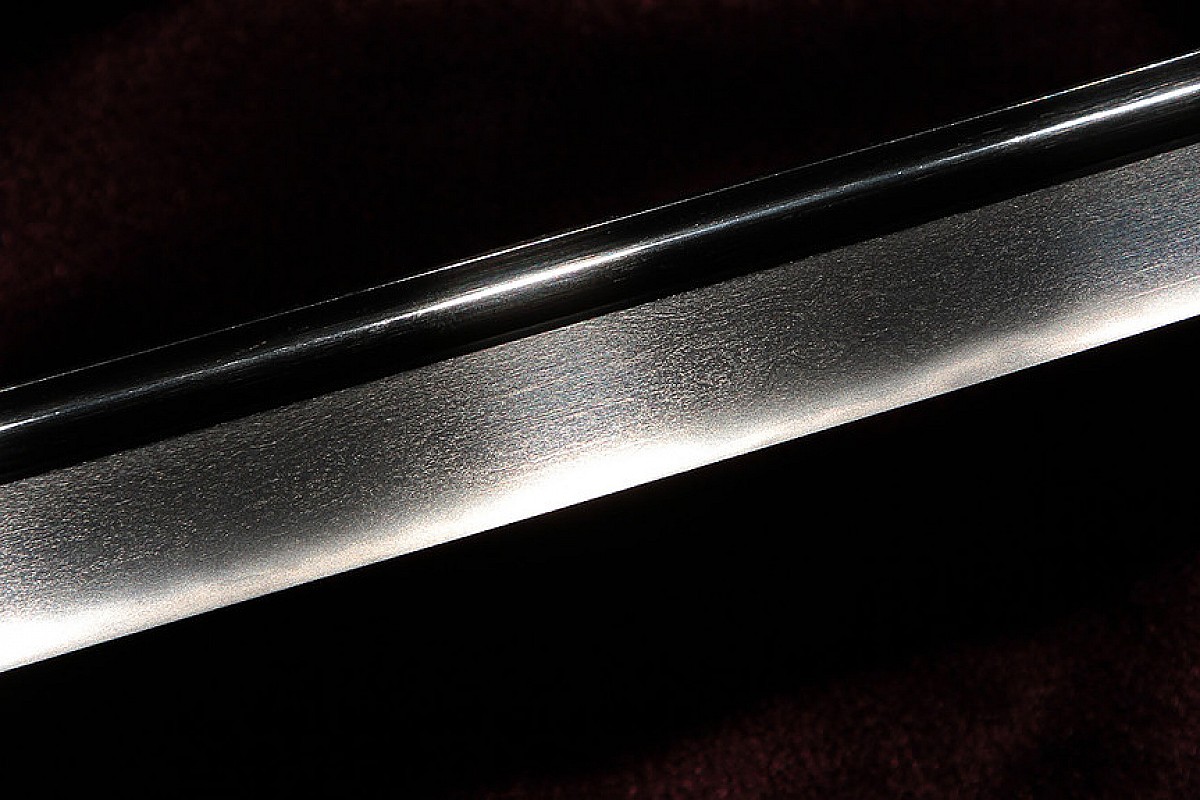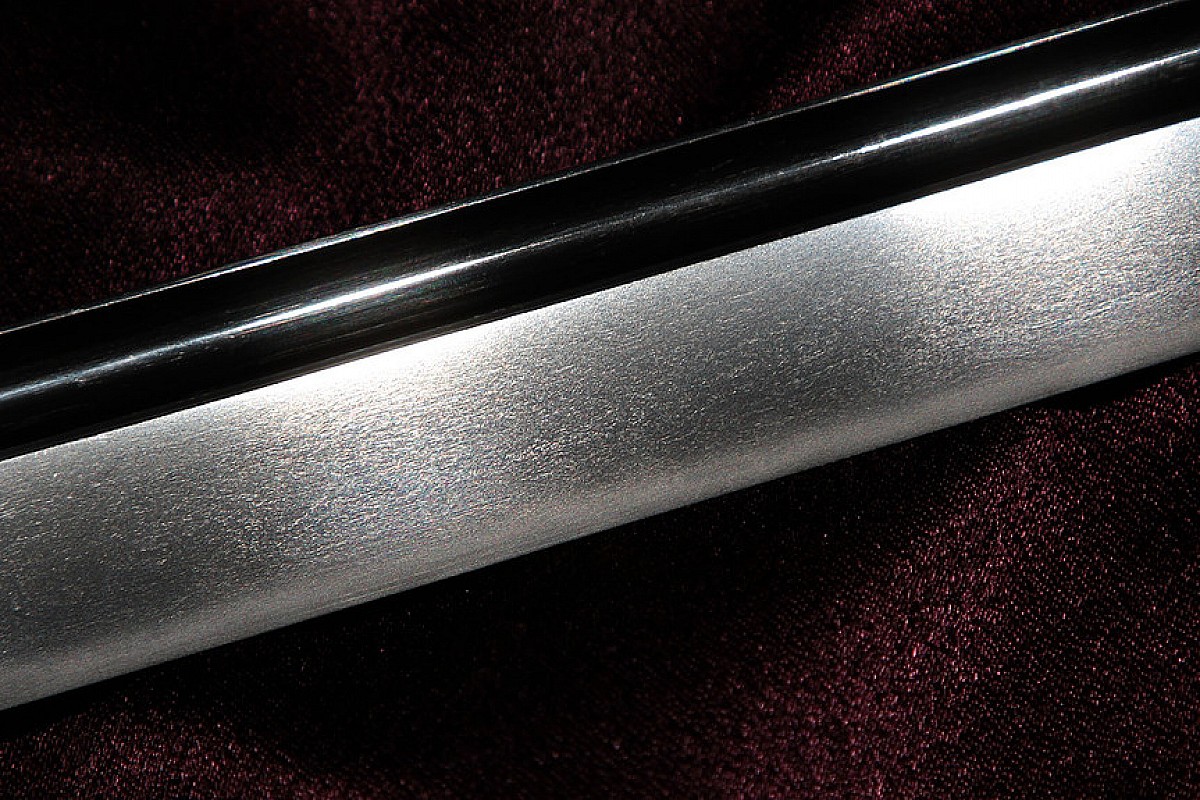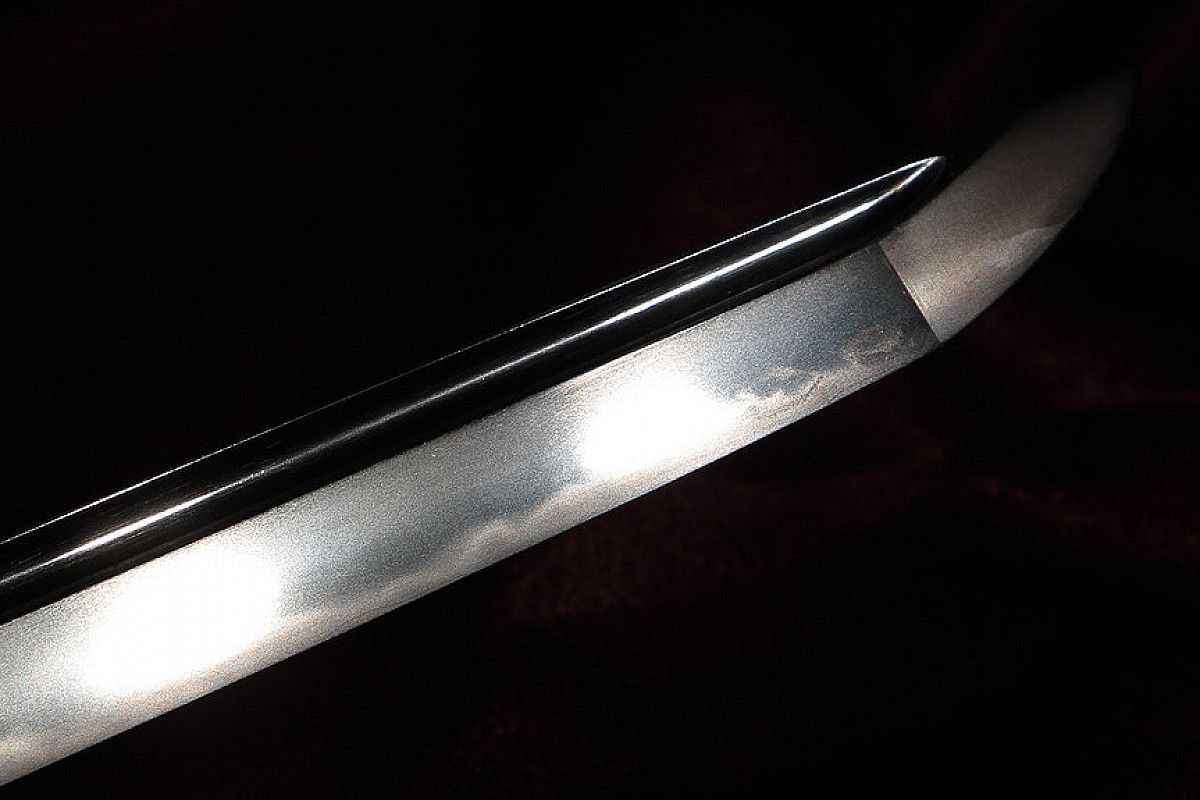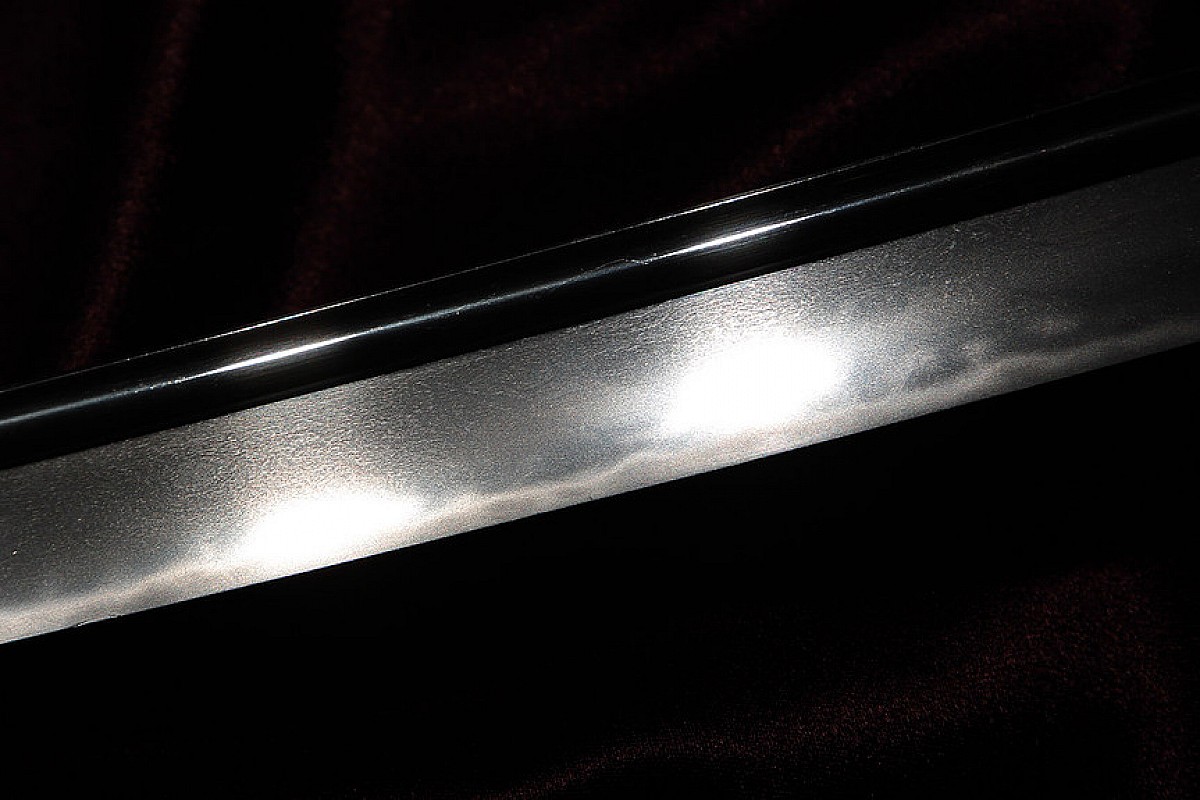Suketsuna (助綱), Bun ́ei (文永, 1264-1275), – Suketsuna (助綱), „Kamakura Yamanouchi-jū Suketsuna“ (鎌倉山内住助綱), first name „Tōgenji“ (藤源次), according to transmission the son of Sukezane (助真). Kinai (畿内), saijō-saku.
Jūyō Tōken Kamakura Ichimonji Suketsuna Katana: o-suriage; mumei; den Suketsuna; nagasa 70.1 cm; sori 1.8 cm; motohaba 3.0 cm; sakihaba 1.9 cm; kissaki nagasa 2.9 cm; nakago nagasa 21.3 cm; nakago sori 0.1.
Designated as Jūyō Token at the 60th jūyō-shinsa held on the 16th of October 2014.
NBTHK Setsumei:
Fukuoka-Ichimonji Suketsuna moved, according to tradition, with his colleague Sukezane to Kamakura in Sagami province and thus they are both also referred to as Kamakura-Ichimonji. They continued creating an Ichimonji-style chōji hamon [in Kamakura] but with more nie [than the other Bizen smiths]. Other characteristic features of these two smiths are that their jigane shows more ji-nie and chikei, and the ha is full of hataraki like kinsuji.
This blade shows a kitae in itame mixed with mokume that comes with plenty of ji-nie, much chikei, and midare-utsuri. The hamon is based on ko-chōji and is mixed with ko-gunome and ko-midare, and furthermore is of a very ko-nie laden deki. The jiba shows the characteristic features of a mid-Kamakura Fukuoka-Ichimonji work. However, as the nie are both more emphasized in ji and ha, and as the blade shows on top of that the qualities of Suketsuna, it must be attributed to him [rather than to a different Fukuoka-Ichimonji smith]. In addition to this, the blade has a favorable condition and is of an excellent deki.
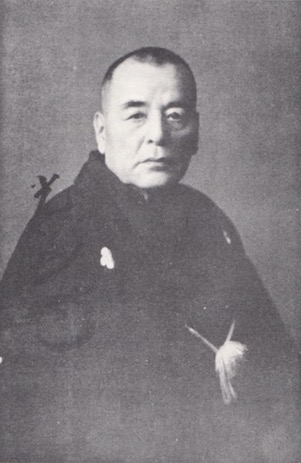
Hon’ami Koson’s sayagaki:
Kamakura Ichimonji Suketsuna nagasa 2 shaku 3 sun 1 bu, is ō-suriage and mumei and has a bōhi on both sides. Last third of June 1943, year of the Sheep, Hon’ami Kōson + kaō, value 200 gold pieces + kaō.
The NBTHK wrote of this blade that it showed a linkage to middle Kamakura Fukuoka Ichimonji work which goes hand in hand with my analysis above in terms of Suketsuna's work period. The hamon is typical for this smith, who's work style shows a hamon that has a variable height, dipping close to the ha and then coming up high again.
The blade has seen battle, and shows a scar alone the mune (a kirikomi). This is preserved and shown in the oshigata as well. We know a lot of these swords were used to fight, but not many of them actually show the scars to testify to their service. So whenever we see these it's a good and lucky day. I'll add one other thing. After suriage we see some things which are real travesties. Sometimes a blade was shortened with care, and the finishing is beautiful and the new nakago is in good form to serve the blade. The care taken in doing the suriage shows a certain degree of respect as well as skill. Some blades that pass Jūyō have horrific nakago after suriage and that’s just how it is, an unfortunate thing. A sword like this was finished correctly and the state of the nakago is a compliment to the overall form. One can appreciate the care that the craftsman took when doing this work. The fact that the bohi run right through and out the end without so much as tapering indicate that this blade had to be quite huge when it was made. It's still a good size at 70.1... generally anything over 70 cm we consider to be premium and the average length is more like 68 cm which seemed to reflect the desires of Edo period swordsmen who would be using the blade. The nakago is not exactly a reason to be buying or not buying a piece, after suriage it is what it is and we are just here to care for these blades.
This blade is in old polish that has some hazing from uchiko but is enjoyable as it is. The jihada of this sword is gorgeous itame with chickei showing the direction of Sōshū at the time of its make. It's a fairly wide blade that lost maybe 20 cm due to suriage, so it would have been about 88-90 cm when it was made. The width at the ha is still 3 cm, and the blade tapers elegantly in keeping with Suketsuna's reputation.
Author: Darcy Brockbank (published on www.yuhindo.com).
